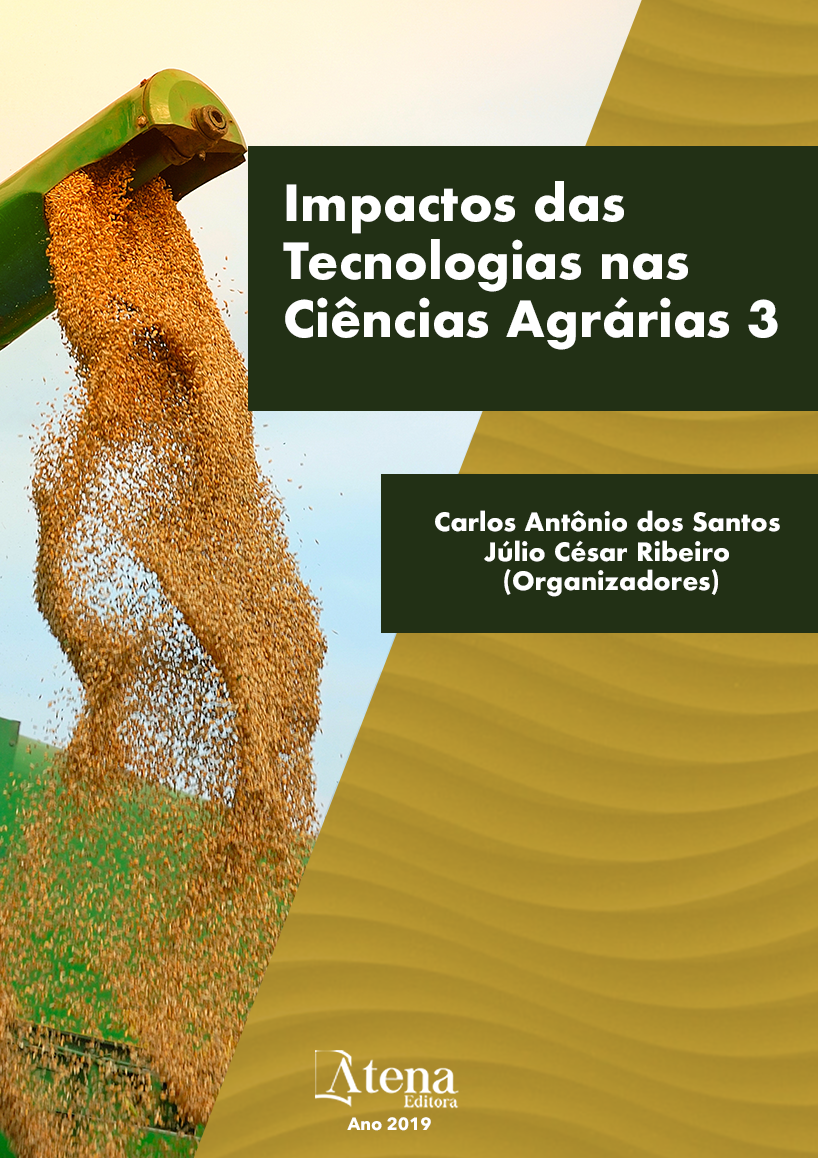
CORRELAÇÃO ENTRE TESTES DE EMERGÊNCIA E DIFERENTES SUBSTRATOS ALTERNATIVOS EM SEMENTES DE TAMARINDO (Tamarindus indica L.)
O presente trabalho teve como
objetivo avaliar a emergência e o crescimento
do tamarindo (Tamarindus indica L.) sob o efeito
de substrato à base de resíduos da cana-deaçúcar.
O delineamento experimental adotado
foi inteiramente casualizados com quatro
tratamentos e quatro repetições. Os tratamentos
foram distribuídos da seguinte forma: T1 - 100%
de solo; T2 – 75% de solo + 25% pó da canade-
açúcar; T3 – 50% de solo + 50% de pó da
cana-de-açúcar; T4 – 25% de solo + 75% do
pó da cana-de-açúcar. Em seguida foi efetuado
a desinfecção das sementes em solução de
hipoclorito de sódio a 2,5% (v/v), seguida de
três enxágues em água destilada e esterilizada
em autoclave. Em seguida para superação
da dormência tegumentar as sementes foram
submetidas ao tratamento pré-germinativo,
sendo furadas com um ferro de solda (Potência
de 70W, frequência de 60Hz e tensão de 120
v) até o rompimento do tegumento e posta
em um recipiente com água destilada. Para a
emergência, foram usadas 4 repetições de 3
sementes, distribuídas em recipientes plásticos
transparente de 500 ml. As variáveis analisadas
foram: percentagem de emergência, índice de
velocidade de emergência e altura das plantas.
Baseado nos resultados obtidos, os substratos
que se apresentaram com melhor desempenho
para as variáveis analisadas ficaram entre 0 a
50 %, respectivamente, bagaço da cana-deaçúcar
O substrato com o máximo do bagaço da
cana-de-açúcar mitigou os efeitos de germinação, índice de velocidade de emergência
e altura de plântulas.
CORRELAÇÃO ENTRE TESTES DE EMERGÊNCIA E DIFERENTES SUBSTRATOS ALTERNATIVOS EM SEMENTES DE TAMARINDO (Tamarindus indica L.)
-
DOI: 10.22533/at.ed.6141930097
-
Palavras-chave: produção de mudas, bagaço de cana-de-açúcar, plântulas.
-
Keywords: production of seedlings, sugarcane bagasse, seedlings
-
Abstract:
The objective of this work was to evaluate the emergence and growth
of tamarind (Tamarindus indica L.) under the effect of substrate based on sugarcane
residues. The experimental design was completely randomized with four treatments
and four replicates. The treatments were distributed as follows: T1 - 100% soil; T2
- 75% soil + 25% sugarcane powder; T3 - 50% soil + 50% sugarcane powder; T4 -
25% of soil + 75% of sugarcane powder. The seeds were then disinfected in 2.5%
(v / v) sodium hypochlorite solution, followed by three rinses in distilled water and
sterilized by autoclaving. Then, to overcome the integumentary dormancy, the seeds
were submitted to pre-germinative treatment, being drilled with a soldering iron (Power
of 70W, frequency of 60Hz and tension of 120v) until the tegument rupture and put in
a container with water distilled. For emergence, 4 replicates of 3 seeds were used,
distributed in 500 ml transparent plastic containers. The analyzed variables were:
emergency percentage, emergency speed index and plant height. Based on the results
obtained, the substrates that presented the best performance for the variables analyzed
were between 0 and 50%, respectively, sugarcane bagasse. The substrate with the
maximum sugarcane bagasse mitigated the effects of germination, emergence velocity
index and seedling height.
-
Número de páginas: 15
- Djair Alves de Melo
- Mislene Rosa Dantas
- Prisana Louise Cortêz Dantas
- Joab Josemar Vitor Ribeiro do Nascimento
- George Henrique Camêlo Guimarães
- Cosma Layssa Santos
- Lucas Borchartt Bandeira
- Damila Karen Cardoso de Melo
- Josefa Juciara Sousa de Freitas


